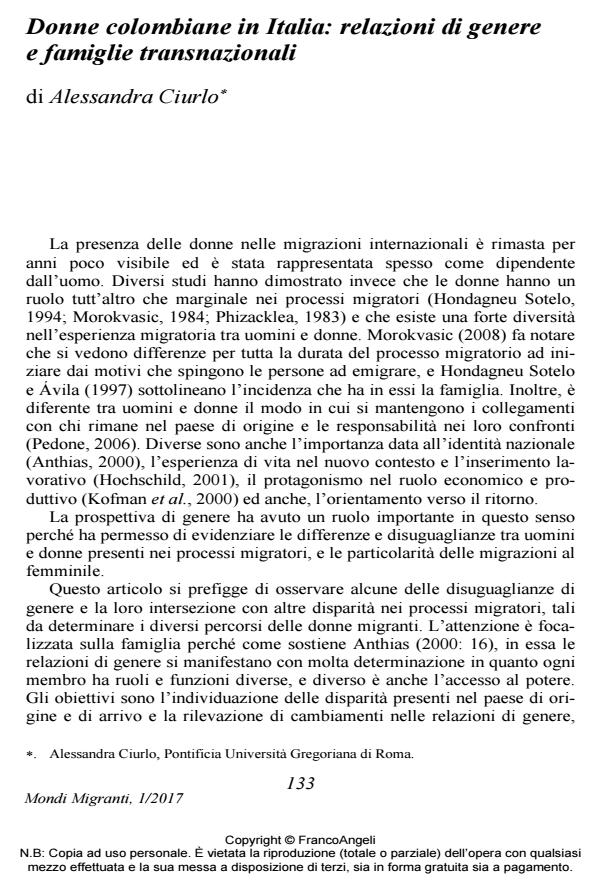Colombian women in Italy: gender relations and transnational famiglie
Journal title MONDI MIGRANTI
Author/s Alessandra Ciurlo
Publishing Year 2017 Issue 2017/1
Language Italian Pages 22 P. 133-154 File size 202 KB
DOI 10.3280/MM2017-001008
DOI is like a bar code for intellectual property: to have more infomation
click here
Below, you can see the article first page
If you want to buy this article in PDF format, you can do it, following the instructions to buy download credits

FrancoAngeli is member of Publishers International Linking Association, Inc (PILA), a not-for-profit association which run the CrossRef service enabling links to and from online scholarly content.
This paper analyses some aspects of female migration taking as a case study the flows from Colombia to Italy. This phenomenon has hardly been researched before, but it is noteworthy for the different routes taken by these women and the importance they play in transnational families. This phenomenon is analysed from a gender perspective, focusing on families because of their relevance in female migration and also as a point of observation of gender relations in the transnational context. The article brings to the fore gender inequalities and their intersection with other disparities stemming from different social categories which all interact during the migration process. It observes some transformations that occur in gender relations as a result of migration where it appears that changes in social and family conditions of migrant women are not homogeneous and can often be ambivalent.
Keywords: Female migration, transnational family, family, gender, Colombia, Italia.
- What role does timing play in migrants’ transition to marriage? A comparison between endogamous and exogamous marriages Giuseppe Gabrielli, Elisa Barbiano di Belgiojoso, Laura Terzera, Anna Paterno, in Journal of Family Research /2019 pp.333
DOI: 10.3224/zff.v31i3.05
Alessandra Ciurlo, Donne colombiane in Italia: relazioni di genere e famiglie transnazionali in "MONDI MIGRANTI" 1/2017, pp 133-154, DOI: 10.3280/MM2017-001008